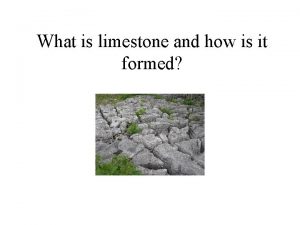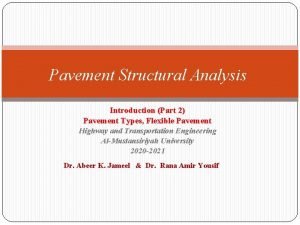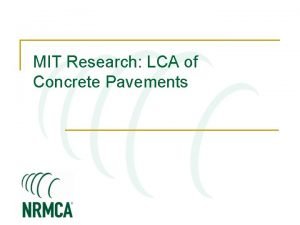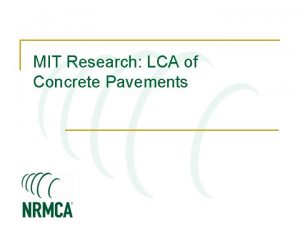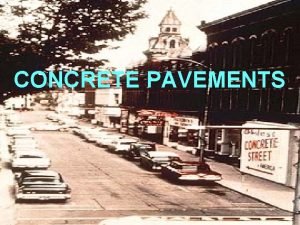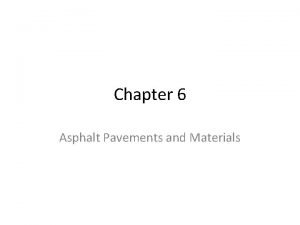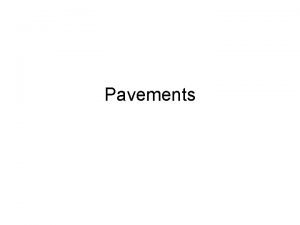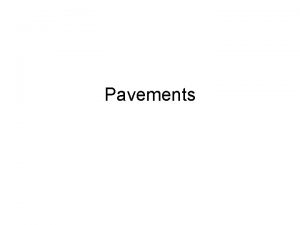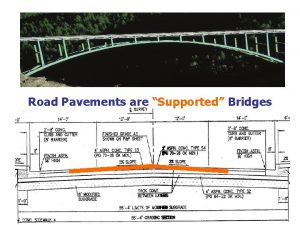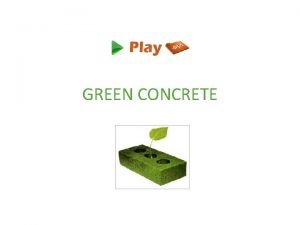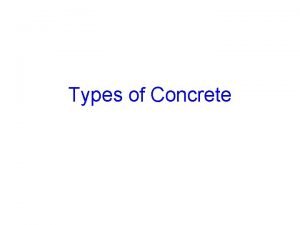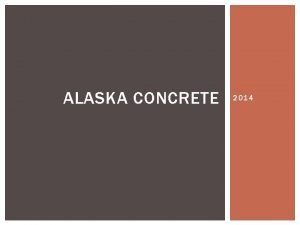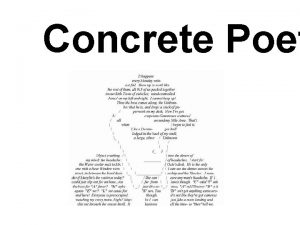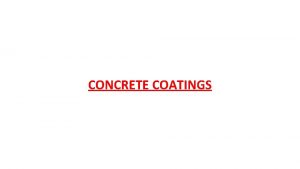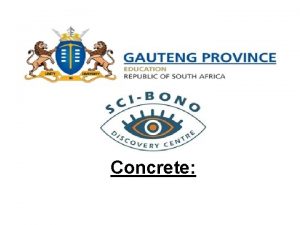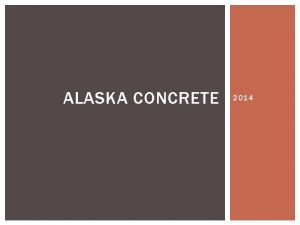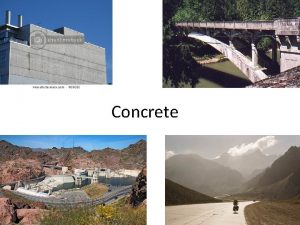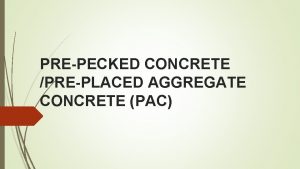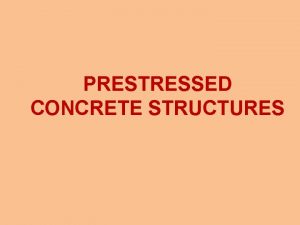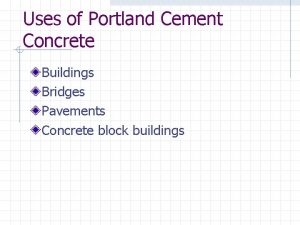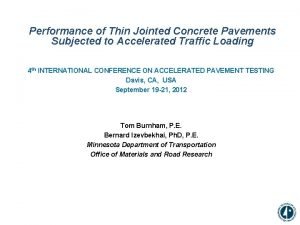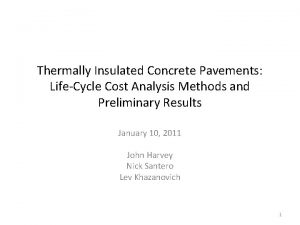Concrete and Concrete Pavements Research Group Meet the




























- Slides: 28

Concrete and Concrete Pavements Research Group

Meet the research team… 3 Ph. D Students 4 MS Students 1 Undergrad

What do I do……


Components of concrete Fine Aggregate Coarse Aggregate Water Cement & SCM’s

Materials: Multi-scale solutions Microstructure Mixture Constituents http: //pittsburgh. about. com/library/pictures/bridges/uc_bridge-12. htm Structures Material Properties

Development and evaluation of engineered pcc materials n n n n Dimensional stability/compatibility (drying shrinkage, thermal coefficient, creep…) Strength (split tensile, flexural, compressive) Stiffness (dynamic & static) Fracture toughness Surface texture Abrasion resistance Durability (chemical and freeze-thaw)

Characterization of material properties through laboratory testing


Pavements 101

Stress: Uniform drops in temperature and moisture Restraint Conditions Moisture and Heat Thermal & Moisture Conditions

Stress: Nonuniform changes in temperature and moisture Temp. or Moist. + _ Positive gradient + _ Negative gradient

Stress: Combined load and Gradients Temp. or Moist. + _ Positive gradient + _ Negative gradient

Construction Gradient Moisture and Heat

Construction Gradients Zero Stress Condition Moisture and Heat At set: Slab Temperature = 105 F Gradient = +0. 5 F/in Stress as a Result of the Construction Gradient = 0 F/in

Measuring Slab Response to Environmental and Applied Loads Instrumentation - Useful in the calibration/validation of models.

Bridge Design 1. Define critical load and axle configuration Pavement Design 1. Accumulate damage of each vehicle load for each hour of the day of each mth of the year

Pavement Design PROCESSED INPUTS Traffic, moisture & temperature prediction models, material models STRUCTURAL MODEL INPUTS • Layer thickness • Material properties • Environmental conditions • Axle loads and volumes s, e, d FATIGUE DAMAGE MODEL n SN OUTPUTS • Cracking • Faulting • IRI CALIBRATION WITH FIELD DISTRESS

Models Consider Changing Conditions Time increment PCC Strength CTB Traffic No Units Base Modulus Subgrade Modulus 0 2 4 Time, years 6 8

Current Design Approach: INPUTS • Slab thickness • k-value • ESAL • PCC Mr n. Concrete q q STATISTICAL REGRESSION MODEL Mixture Properties: Modulus of rupture (28 day) Elastic Modulus (28 day) OUTPUTS • PSI

New MEPDG Design Guide Inputs n Concrete Mixture Properties: ¨ ¨ ¨ ¨ n Mixture Design Information ¨ ¨ ¨ n Modulus of rupture (7, 14, 28 & 90 day, 28 day to 20 yr ratio) Elastic modulus (7, 14, 28 & 90 day, 28 day to 20 yr ratio) Poisson’s ratio Unit weight Thermal coefficient of expansion Drying Shrinkage Thermal conductivity Heat capacity Cement type w/c ratio Aggregate type Set Temperature Information ¨ ¨ Zero stress temperature profile

Currently Funded Projects

1. Project Title: Evaluation of the R 1 -37 A Rigid Pavement Design Procedure Sponsoring Agency: Federal Highway Administration Pitt Expenditures/Duration: $100, 000/1 year Collaborators: ARA, AET PROCESSSED STRUCTURAL PI: J. Vandenbossche INPUTS Traffic, MODEL moisture & temperature prediction models, material models INPUTS • Layer thickness • Material properties • Environmental Conditions • Axle Loads and Volumes s, e, d FATIGUE DAMAGE MODEL n SN OUTPUTS • Cracking • Faulting • IRI CALIBRATION WITH FIELD DISTRESS

2. Project Title: Investigate the Design and Construction of Composite Pavement Systems Sponsoring Agency: SHRP 2/National Academy of Science Pitt Expenditures/Duration: $102, 000/4 year Collaborators: ARA, U of Mn & UCDavis PI: M. Darter A PCC surface placed over a just placed PCC layer (“wet on wet”). (Bolander et. al. 2007) Objective: Focus on debonding, built-in curl and joint (crack) formation Pitt’s Role 1. Instrumentation of test sections 2. Use of instrumentation data for model calibration/validation

3. Project Title: Using Falling Weight Deflectometer Data with Mechanistic-Empirical Design and Analysis Sponsoring Agency: Federal Highway Administration Pitt Expenditures/Duration: $51, 000/1. 5 year Collaborators: Ap. Tech, MSU PI: K. Smith Rigid Pavements 1. Backcalculate layer properties 2. Detect voids 3. Characterize joint performance NDT Load NDT Sensors r D

4. Project Title: The Development of a Design Procedure for Thin and Ultra-Thin Concrete Pavements Sponsoring Agency: Federal Highway Administration Pitt Expenditures/Duration: $330, 000/3 year PI: J. Vandenbossche Primary Concerns 1. Characterize effects of fibers 2. Bond strength/degradation Adapted from ACPA & Rosler

5. Project Title: Establish Inputs for the New Rigid Component of the Mechanistic-Empirical Pavement Design Guide Sponsoring Agency: Penn. DOT Pitt Expenditures/Duration: $509, 000/3 year PI: J. Vandenbossche Primary Efforts 1. Material characterization 2. Pavement instrumentation Moisture and Heat

6. Project Title: Premature Deterioration of Jointed Plain Concrete Pavements Sponsoring Agency: Penn. DOT Pitt Expenditures/Duration: $257, 000/1. 5 year PI: J. Vandenbossche Material Characterization • Strength development • Fracture toughness • Thermal coefficient • Drying shrinkage • Environmental loads • Axle loads and volumes Structural Model
 Limestone cave diagram
Limestone cave diagram Parts of pavement
Parts of pavement Peace be with you till we meet again
Peace be with you till we meet again Informal inventory
Informal inventory Concrete semi concrete abstract
Concrete semi concrete abstract Hình ảnh bộ gõ cơ thể búng tay
Hình ảnh bộ gõ cơ thể búng tay Frameset trong html5
Frameset trong html5 Bổ thể
Bổ thể Tỉ lệ cơ thể trẻ em
Tỉ lệ cơ thể trẻ em Chó sói
Chó sói Thang điểm glasgow
Thang điểm glasgow Bài hát chúa yêu trần thế alleluia
Bài hát chúa yêu trần thế alleluia Môn thể thao bắt đầu bằng chữ f
Môn thể thao bắt đầu bằng chữ f Thế nào là hệ số cao nhất
Thế nào là hệ số cao nhất Các châu lục và đại dương trên thế giới
Các châu lục và đại dương trên thế giới Công thức tính độ biến thiên đông lượng
Công thức tính độ biến thiên đông lượng Trời xanh đây là của chúng ta thể thơ
Trời xanh đây là của chúng ta thể thơ Mật thư tọa độ 5x5
Mật thư tọa độ 5x5 Làm thế nào để 102-1=99
Làm thế nào để 102-1=99 Phản ứng thế ankan
Phản ứng thế ankan Các châu lục và đại dương trên thế giới
Các châu lục và đại dương trên thế giới Thể thơ truyền thống
Thể thơ truyền thống Quá trình desamine hóa có thể tạo ra
Quá trình desamine hóa có thể tạo ra Một số thể thơ truyền thống
Một số thể thơ truyền thống Bàn tay mà dây bẩn
Bàn tay mà dây bẩn Vẽ hình chiếu vuông góc của vật thể sau
Vẽ hình chiếu vuông góc của vật thể sau Nguyên nhân của sự mỏi cơ sinh 8
Nguyên nhân của sự mỏi cơ sinh 8 đặc điểm cơ thể của người tối cổ
đặc điểm cơ thể của người tối cổ Thế nào là giọng cùng tên? *
Thế nào là giọng cùng tên? *
